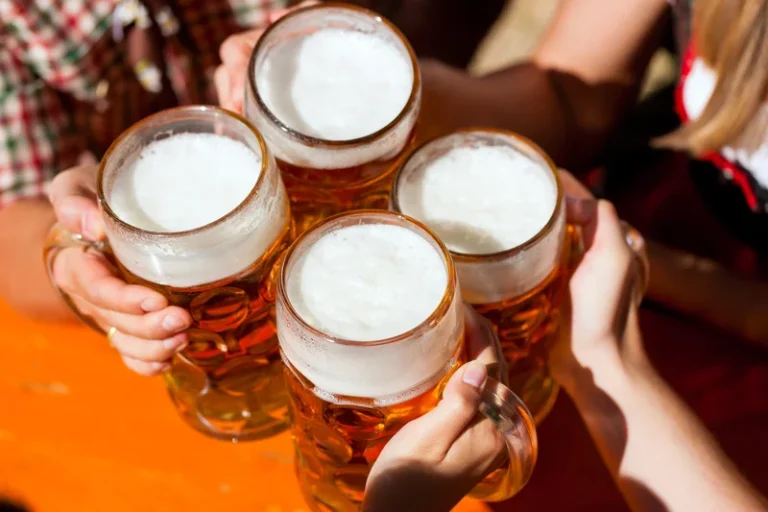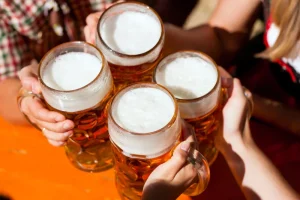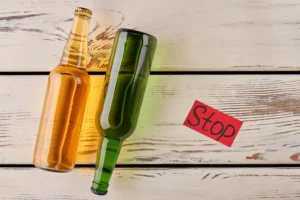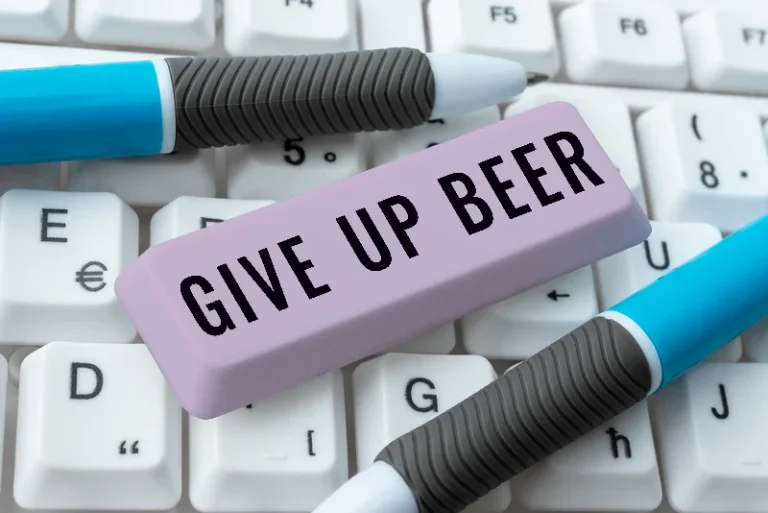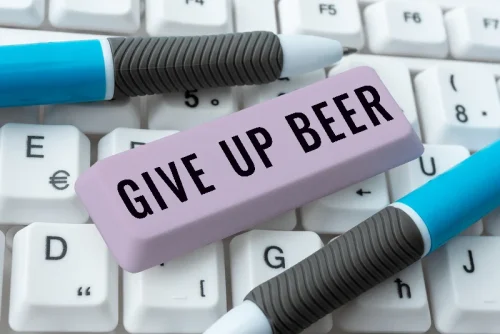
Children of alcoholics are four times more likely than other children to develop an alcohol addiction. While about 50 percent of this risk has genetic underpinnings, the actual home environment also plays a role. This is often a learned behavior in alcoholic households, where the entire family strives to keep the parent’s addiction secret. Having an alcoholic parent increases a child’s risk of being physically, sexually or emotionally abused, according to the Centers for Disease Control and Prevention’s Adverse Childhood Experiences study. The solution for adult children is found in the relationship between a person’s inner child and parent, which are two different sides of self.
Dr. Tian Dayton, a clinical psychologist, reports the impact of this trauma on a child and how the environment in which these children grow up directly reflects the major factors contributing to PTSD. These factors include the feeling of being unable to escape from the pain, being at risk in the family, and being frightened in a place that should be safe. According to a study by the National Association of Children of Alcoholics (NACOA), there are over 11 million children in the U.S. under the age of 18 living in families with at least one alcoholic parent.
Couples therapy can also have benefit, according to White, if you believe behaviors rooted in your childhood experiences have started to affect your romantic relationship. Coping with the lasting effects of a parent’s alcohol use can be difficult, but you don’t have to do it alone. If one or more parents continue drinking heavily as the child is growing up, this can also have negative consequences.
You have a higher risk of developing AUD yourself
They show up as anxiety, depression, substance abuse, stress, anger, and relationship problems. Understanding the impact of growing up in a household that misuses alcohol is crucial for recognizing the need for targeted support and treatment. It’s essential for ACoAs and those supporting them to be aware of the resources available, including therapy, support groups, and strategies for developing healthier coping mechanisms. Having an alcoholic parent can cause a child to experience anxiety, depression, low self-esteem, and trust issues. They may also struggle with relationships, face academic challenges, and have a higher risk of developing substance abuse problems themselves. Children of alcoholics are at higher risk than others for emotional issues.
Mental Health Disorders
- The constant lying, manipulation, and harsh parenting makes it hard to trust people.
- Robert is our health care professional reviewer of this website.
- Alcohol use disorder (AUD) is a chronic health condition that can have a serious impact on a person’s life.
- A 2014 review found that children of parents who misuse alcohol often have trouble developing emotional regulation abilities.
- A 2021 study shows that parental alcohol abuse significantly increases the chance of having a dysfunctional family environment.
Quality of life improves significantly when you are able to leave old patterns behind and eliminate the blind spots that have influenced your choices. Feelings of confusion, vulnerability, shame, guilt, fear, anxiety and insecurity are all common among children of alcoholics. Many of these children go on to develop symptoms of post-traumatic stress disorder as adults. Eventually and with the help of others, adult children will come to view alcoholism and other drug addiction as a disease and family dysfunction as the inevitable result. They will come to understand that their past cannot be changed, but they can unlearn their harmful coping mechanisms, tend to their childhood trauma and find “a sense of wholeness [they] never knew was possible.” Children of alcoholics will eventually grow up to become adults, but the trauma can linger for years.
Adult Children of Alcoholics − Key Takeaways
Although we cannot change the past or the people we love, healing and recovery are possible with support and guidance. Experiential therapy with ACOAs has reduced shame, improved self-esteem, and provided tools for healthier relationships. The bottom line is that it’s on the parent or parents to curb their drinking and get the help they need. You can talk with them, mesclun psychedelic cope with them, beg them and cry, but until they want to stop drinking, they won’t. The goal is to get your parents to understand what their alcoholism is doing to the family. Children of alcoholics may struggle with employment, such as trouble maintaining a steady job due to emotional distress or instability caused by their home environment.
Adult children of alcoholics may feel the fear, anxiety, anger and self-hatred that lives on from their childhood. They might notice the old coping mechanisms and behaviors leaking out in adulthood—the people-pleasing, controlling behavior, approval-seeking, or judgment of self and others. Children with alcoholic parents often have to take care of their parents and siblings. As an adult, you still spend a lot of time and energy taking care of other people and their problems (sometimes trying to rescue or “fix” them).
In 2019, around 14.5 million people ages 12 and older in the United States were living with this condition, according to the National Institute on Alcohol Abuse and Alcoholism (NIAAA). She eventually reached out for help, determined to break the pattern by facing her childhood before she entered into another painful relationship. It is not unusual for ACOAs to seek help when their children reach an age that mirrors a time of pain from their own childhood. They may also seek help when they notice a recurring pattern in their relationships. Alcohol use disorder (AUD) is a chronic and potentially severe medical condition characterized by an individual’s compulsive and problematic pattern of alcohol consumption. This disease extensively harms not only the alcohol user but also their families.
Their risk also goes up if both parents are addicted to alcohol and other drugs, if the alcohol abuse is severe and if there is violence in the home. Children of alcoholics tend to struggle more in school than other children. Studies show that children with alcoholic parents tend to perform worse on tests and are more likely to repeat a group activities for addiction recovery grade. They’re also more likely to be truant, get suspended and drop out of school. Effective therapy for ACOAs does not include confrontations or blaming one’s parents. It is possible to love someone and be disappointed and hurt at the same time.
Sadly, a parent in the throes of addiction is simply unable to provide the consistent nurturing, support and guidance their child needs and deserves. In addition, all too often, the parent who is not an alcoholic is too swept up in their spouse’s disease to meet the child’s needs. The full list of characteristics can be found in the Laundry List, the 14 common traits of adult children, which was written by the ACA founder Tony A. The ACA has group meetings (based on the 12-step principles of “Alcoholics Anonymous”) solution-focused therapy techniques pdf that are specifically designed to help adult children overcome the lasting damage of parental drinking. You can talk with a healthcare professional if you’re unsure where to start. They may be able to recommend the next steps, including referring you to a mental health professional if necessary.
Obviously everyone will have his or her own personal experience, but there are some common effects of being a COA. Shame is commonly felt, especially if the child is hiding the parental alcoholism. The child may feel embarrassed of the parents, and this may cause the child to lie or even develop a story to explain it. Guilt is also commonly felt by children of alcoholics, but it is very important to realize and remember that it is not the child’s fault, regardless of what may be said. Nearly 8 percent of women in the United States continue drinking during pregnancy, and up to 5 percent of newborns suffer from fetal alcohol syndrome.
Growing up with a parent who has AUD can create an environment of unpredictability, fear, confusion, and distress, says Peifer. These conditions can take a toll on your sense of safety, which may then affect the way you communicate with and relate to others. Even those with a higher genetic risk for AUD can often take a harm reduction approach when they learn to better understand their triggers, risk factors, and engagement with substances, Peifer says. Ann Smith is the author of the books Grandchildren of Alcoholics and Overcoming Perfectionism. If this was the case with your parent, you may have learned to pay attention to small, subtle signs at a young age.
Alcohol Use in Families: Impact on Adult Children
For example, the child may feel responsible and needlessly guilty for needing new shoes or clothes because they believe that this in some way contributes to the family’s stress over finances. They might assume the role of needing to take care of their parent, a role that can sometimes remain intact in later relationships. A treatment center will attempt to verify your health insurance benefits and/or necessary authorizations on your behalf. Please note, this is only a quote of benefits and/or authorization. We cannot guarantee payment or verification eligibility as conveyed by your health insurance provider will be accurate and complete. Payment of benefits are subject to all terms, conditions, limitations, and exclusions of the member’s contract at time of service.
Graduate School
Published “The Laundry List,” which describes common characteristics shared by most adult children with a parent with alcohol use disorder. Although people with AUD aren’t “bad” people (or “bad” parents), their alcohol use can create a home environment not suited for a child. A 2021 study shows that parental alcohol abuse significantly increases the chance of having a dysfunctional family environment. Behavioral problems in school — such as lying, stealing and fighting — are common, and children from alcoholic households tend to be more impulsive than other kids. Children with alcoholic parents tend to have poorer language and reasoning skills than other children, according to the National Association of Children of Alcoholics. Children who are raised by a parent with an alcohol addiction are more likely than other children to experience emotional neglect, physical neglect and emotional and behavioral problems.
According to Peifer, a mental health professional can help you connect deep-rooted fears and wounds stemming from childhood to behaviors, responses, and patterns showing up in your adult life. A 2012 study that considered 359 adult children of parents with AUD found that they tended to fall within five distinct personality subtypes. One of these types, termed Awkward/Inhibited by researchers, was characterized by feelings of inadequacy and powerlessness. An adult child of an alcoholic may exhibit insecure attachment styles, such as anxious-preoccupied or dismissive-avoidant, due to emotional neglect experienced in childhood, impacting their relationships and emotional well-being. According to the National Association for Children of Alcoholics, it’s important for children of alcoholics to know they are not alone and that alcohol addiction is a disease. Children also need to know that their parent’s alcohol addiction is not their fault and that they can’t fix it, but there are safe places and people who can help.
Read more


